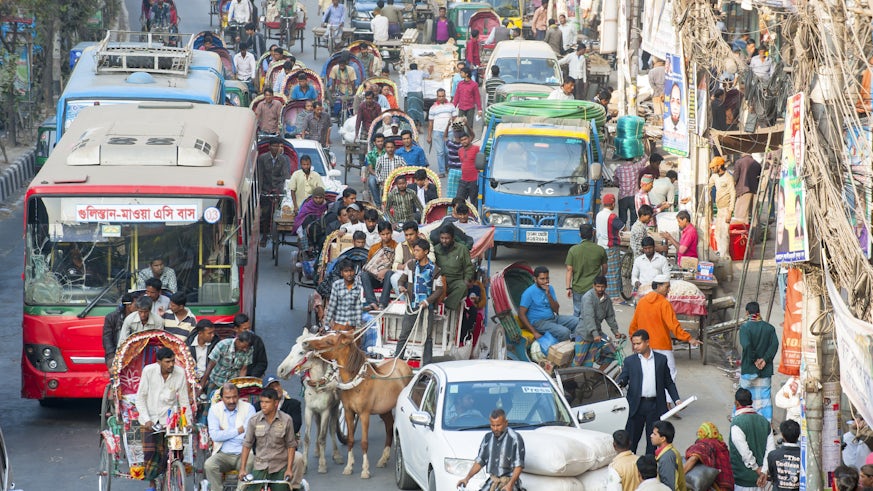Innovative approach to help country decide on energy needs
9 January 2015

An innovative web-based computer model to help one of the world's most densely populated countries get to grips with its energy needs has been developed by the University.
Economic growth is expected to drive up demand for energy in Bangladesh but there are dwindling domestic reserves of conventional fuels.
An open, interactive computer model will enable policy makers in Bangladesh – or anyone else – to consider different approaches to the country's energy policy for the next 35 years.
It allows users to experiment with a range of energy policies while calculating, for example, the effects on the environment, in particular on the country's ability to produce enough food.
It will offer an insight into the difficulties and trade-offs faced when considering the country's energy needs up to 2050.
The Bangladesh 2050 Energy Pathways Calculator (BD2050) has been developed by a team led by Dr Monjur Mourshed, of the School of Engineering.
The work has been supported by the Minister of Power, Energy and Mineral Resources in Bangladesh, the Department of Energy and Climate Change in the UK and the British High Commission in Dhaka, Bangladesh.
Dr Mourshed said: "BD2050 is designed to enable the Government and the public to explore high-level energy, economy and emission pathway options and their impacts on land use, electricity, energy security and food."
He said two different formats of the model had been released as "open source" – meaning anyone can access and modify them - to encourage wider participation and further research and development.
Bangladesh, with a population of more than 150m, faces challenges for the development of its energy infrastructure.
Bangladesh has been growing 5% annually in the last decade and is projected to be a middle income country by 2021. Ensuring access to convenient forms of energy is thus vital for economic development and poverty alleviation.
Fuel reserves are falling while demand for energy is on the increase.
Jan Kiso, from the UK's Department for Energy and Climate Change, said: "The ground-breaking 2050 analysis shows that in all future scenarios there will be an unprecedented growth in the demand for energy, compounded by the growth in population and economy.
"Energy security will be challenged by the need to retain as much agricultural land as possible for the production of food instead of cultivating bioenergy crops.
"Pressures from urbanisation, scarcity of land, and climate change impacts are likely to limit the choice of pathways."
The calculator was launched at an event at the Gobeshona Conference for Research on Climate Change in Dhaka, Bangladesh.
The British High Commission, Robert Gibson, said at the launch that the calculator was an "opportunity for all sectors of society to influence, debate and lobby for the type of future they would like for their country and, more importantly, for their children and beyond".
Dr Saleemul Huq, Director, International Centre for Climate Change and Development, said the calculator was an "excellent tool to help Bangladesh plan a low carbon development pathway".